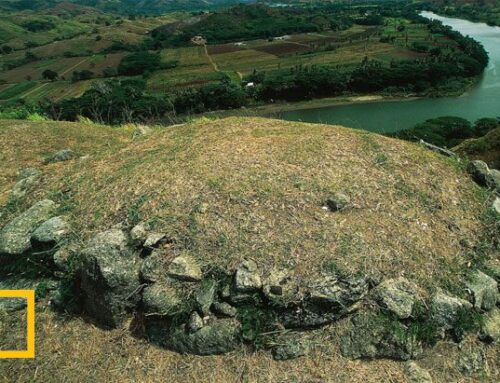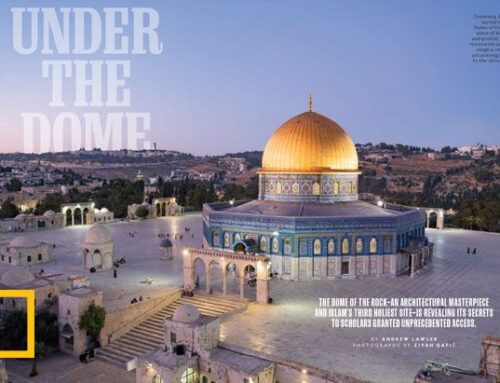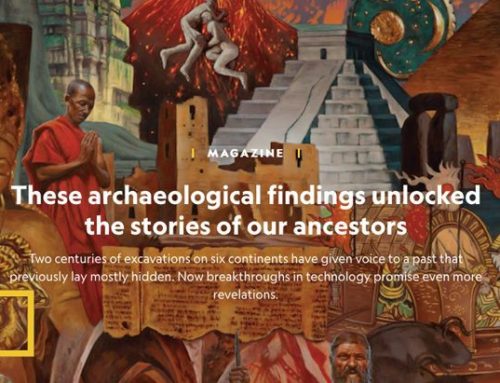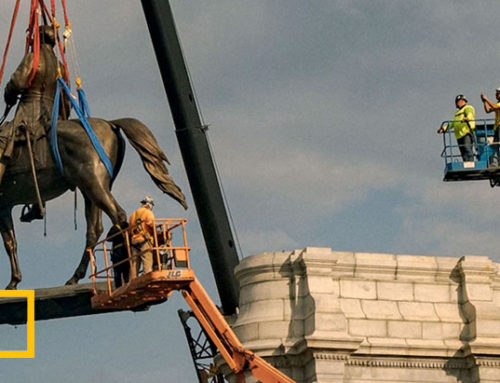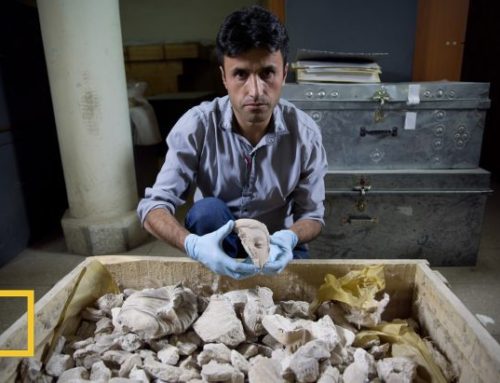“Don’t shoot! We’re Americans!” Henry Wright shouts as he thrusts his head out the window. It’s dark, but dead center in our headlights is a jumpy young U.S. marine aiming his weapon at the windshield of our white SUV. This team of archaeologists and journalists who’ve come to assess the damage to Iraq’s ancient sites had been warned of armed looters, not friendly fire. But cruising the backstreets of the battered town of Nasiriyah after dark in search of the local museum, we’ve run into a Marine roadblock. The museum, we discover, is now a military barracks.
Grim tales of mass looting have brought our expedition, sponsored last May by the National Geographic Society and led by Henry Wright, a professor at the University of Michigan’s Museum of Anthropology, to this dusty place where humanity’s first great cities once dominated the vast Mesopotamian plain. While media attention has focused on the loss—and recovery—of artifacts in Baghdad’s Iraq Museum, we’re investigating reports that poverty-stricken villagers and organized bandits are ransacking ancient mounds across the country, feeding the foreign appetite for antiquities. The five archaeologists on the team are anxious to see what’s happened to the sites in the decade since the 1991 gulf war prompted U.S. restrictions that kept Americans from digging in Iraq.
Our expedition finds both tragedy and reason for hope. Some sites resemble moonscapes, cratered with freshly dug holes and trenches where looters may have ripped out more artifacts in a few weeks than archaeologists have excavated in decades. Others shimmer intact and silent in the desert heat. While half the expedition team travels through southern Iraq, the other half probes the situation in the north, where the damage is less dramatic but still a cause for serious concern.
In Nasiriyah we are in luck. Marine Maj. Glenn Sadowski is extremely helpful. He has organized an armed escort to take Iraqi archaeologist Abdul Amir Hamdany to survey the local sites, and he invites us along. The two men are an unlikely duo. Sadowski is a strapping reservist whose platoon lost seven men during the 1991 gulf war. Hamdany is a soft-spoken scientist who’s been evicted from his own museum, where off-duty marines are pumping iron to heavy metal music. Neither speaks the other’s language. But Hamdany returns day after day to stand on the burning sidewalk and ask Sadowski’s help. “In the bazaars they are selling antiquities,” he says. “We have to do something.”
The aim of the National Geographic survey is to put a spotlight on the crisis. Without U.S. troops or paid Iraqi guards providing round-the-clock protection, many sites will remain vulnerable. Keeping Iraq’s treasures safe will require a level of security that at this point is elusive at best. But Hamdany knows that careful assessment of site damage is a critical first step. “You can tell he has a passion for this,” Major Sadowski says, after agreeing to supply the escort. “It’s the least I could do.” On such slender threads of trust and respect hangs the future of Mesopotamia’s past.

